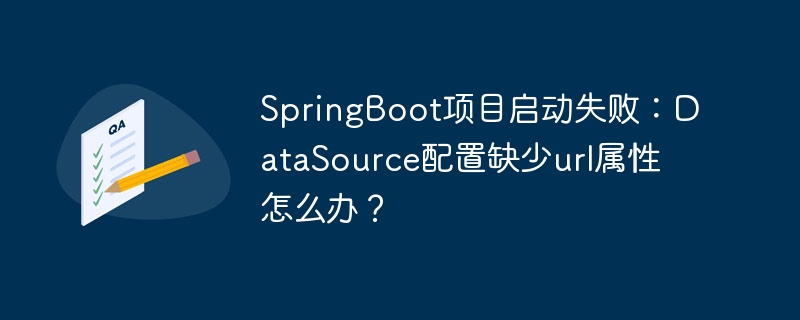golang的國際化支持可通過golang.org/x/text包實現,涉及字符編碼、日期格式、貨幣符號等處理。1. 安裝依賴包go get golang.org/x/text/…;2. 定義本地化資源如json文件存儲翻譯內容;3. 加載資源并根據用戶語言環境切換,使用language.parseacceptlanguage解析http accept-language頭;4. 使用message.printer格式化輸出文本,支持復數形式處理;5. 可通過Cookie或Session持久化用戶語言偏好。此外,該包還支持本地化的日期、時間、數字格式化操作。

Golang的國際化支持,說白了,就是讓你的程序能根據用戶的語言環境顯示不同的文字,比如中文、英文、日文等等。這可不是簡單地翻譯幾個字符串那么簡單,它涉及到字符編碼、日期格式、貨幣符號等等一系列問題。

解決方案
要讓你的Golang應用支持國際化,核心在于使用golang.org/x/text這個包。它提供了處理文本、日期、數字等本地化相關的功能。

-
安裝依賴:
立即學習“go語言免費學習筆記(深入)”;
首先,你需要安裝golang.org/x/text包。

go get golang.org/x/text/...
-
定義本地化資源:
你需要為每種語言準備一個資源文件,通常是JSON或YAML格式。這些文件包含翻譯后的文本。例如,en.json可能包含:
{ "greeting": "Hello, %s!" }而zh.json可能包含:
{ "greeting": "你好,%s!" } -
加載本地化資源:
使用golang.org/x/text/language包來確定用戶的語言環境。然后,使用golang.org/x/text/message包來加載對應的本地化資源。
package main import ( "fmt" "log" "net/http" "golang.org/x/text/language" "golang.org/x/text/message" "golang.org/x/text/message/catalog" ) func main() { // 創建一個catalog c := catalog.NewBuilder() // 添加英文翻譯 err := c.SetString(language.English, "Hello, %s!", "Hello, %s!") if err != nil { log.Fatal(err) } // 添加中文翻譯 err = c.SetString(language.SimplifiedChinese, "Hello, %s!", "你好,%s!") if err != nil { log.Fatal(err) } // 創建一個Printer p := message.NewPrinter(language.English, message.Catalog(c)) // 默認使用英文 // 根據HTTP Header設置語言 http.HandleFunc("/", func(w http.ResponseWriter, r *http.Request) { lang, err := language.ParseAcceptLanguage(r.Header.Get("Accept-Language")) if err == nil && len(lang) > 0 { p = message.NewPrinter(lang[0], message.Catalog(c)) } name := r.URL.Query().Get("name") if name == "" { name = "World" } fmt.Fprintf(w, p.Sprintf("Hello, %s!", name)) }) log.Fatal(http.ListenAndServe(":8080", nil)) }
-
使用本地化資源:
使用message.Printer來格式化文本。Printer會根據用戶的語言環境選擇合適的翻譯。
p := message.NewPrinter(language.SimplifiedChinese) fmt.Println(p.Sprintf("greeting", "張三")) // 輸出:你好,張三!
如何檢測用戶的語言偏好?
檢測用戶語言偏好的方法有很多,最常見的是通過HTTP請求頭中的Accept-Language字段。你也可以使用cookie或session來存儲用戶的語言偏好。
-
Accept-Language Header:
這是最常用的方法。瀏覽器會自動發送Accept-Language頭,其中包含用戶偏好的語言列表。你可以使用language.ParseAcceptLanguage函數來解析這個頭。
lang, _ := language.ParseAcceptLanguage(r.Header.Get("Accept-Language")) -
Cookie:
你可以設置一個cookie來存儲用戶的語言偏好。當用戶訪問你的網站時,你可以讀取這個cookie來確定用戶的語言。
// 設置cookie http.SetCookie(w, &http.Cookie{ Name: "lang", Value: "zh", }) // 讀取cookie cookie, err := r.Cookie("lang") if err == nil { lang := cookie.Value // ... } -
Session:
你可以使用session來存儲用戶的語言偏好。這比cookie更安全,因為session數據存儲在服務器端。
Golang國際化中的日期和時間格式化問題
日期和時間格式化是國際化中一個重要的方面。不同的國家和地區使用不同的日期和時間格式。golang.org/x/text/language包提供了DateFormat和TimeFormat函數來格式化日期和時間。
import ( "fmt" "time" "golang.org/x/text/language" "golang.org/x/text/message" ) func main() { loc := time.FixedZone("Asia/Shanghai", 8*60*60) t := time.Now().In(loc) p := message.NewPrinter(language.SimplifiedChinese) fmt.Println(p.Sprintf("%s", t.Format(time.RFC3339))) // 輸出:2023-10-27T10:00:00+08:00 }
當然,你也可以自定義日期和時間格式。
如何處理復數形式的本地化?
在某些語言中,名詞的復數形式會根據數量的不同而變化。例如,在英語中,”1 book” 和 “2 books” 使用不同的形式。golang.org/x/text/message包提供了處理復數形式的功能。雖然稍微復雜,但很有用。
// en.json { "unread_messages": { "zero": "You have no unread messages.", "one": "You have one unread message.", "other": "You have %d unread messages." } } // zh.json { "unread_messages": { "zero": "你沒有未讀消息。", "one": "你有一條未讀消息。", "other": "你有%d條未讀消息。" } } // Go代碼 p := message.NewPrinter(language.SimplifiedChinese) n := 0 fmt.Println(p.Sprintf("unread_messages", message.Plural(n, "zero=你沒有未讀消息;one=你有一條未讀消息;other=你有%d條未讀消息"))) n = 1 fmt.Println(p.Sprintf("unread_messages", message.Plural(n, "zero=你沒有未讀消息;one=你有一條未讀消息;other=你有%d條未讀消息"))) n = 5 fmt.Println(p.Sprintf("unread_messages", message.Plural(n, "zero=你沒有未讀消息;one=你有一條未讀消息;other=你有%d條未讀消息")))
總而言之,Golang的國際化支持需要一些額外的工作,但它可以讓你的應用更好地服務于全球用戶。記住,這不僅僅是翻譯文本,還包括處理日期、時間、數字等本地化相關的問題。



















